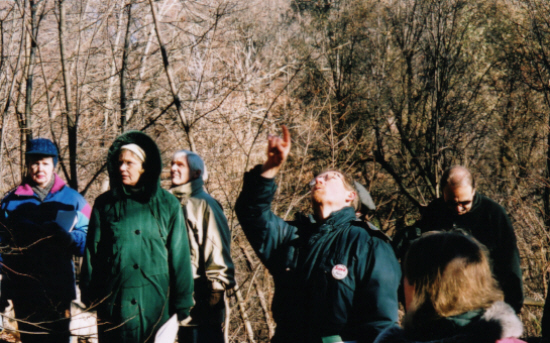The west slope of the Vale of Avoca Ravine between Rosehill Reservoir and the CPR railway bridge is being damaged by sheet erosion, particularly on steep sections, where heavy rain carry most leaves and debris to lower areas. The forest is dominated by fifty to seventy year old Norway Maple, which because of its dense shade and competitive roots has killed off much of the lower vegetation and thus is the single largest contributing factor to the erosion. The most of this slope has bare soil with little groundcover. The proposal is to convert the existing forest to a mixed forest and at the same time work with other local problems. The object will be to improve slope stability, ameliorate aesthetics, provide screening for the homes on Summerhill Gardens, expand the percentage of natural vegetation, and furnish wildlife habitat. While this slope is dominated by Norway Maple there are both White and Red Oaks present as well as White Ash and other native and exotic trees. The houses along Summerhill Gardens are built much too close to the top of slope and in some cases are built over the edge. Access to the slope is provided by an walking trail that was constructed many years ago and in need of repair.
The whole slope could be a high-quality, healthy mixed forest similar to the remnant forest community near the bridge (Community #2). This habitat type is very uncommon in downtown Toronto and is considered a high priority for restoration. The soils are deep, silty fine fresh sands, which overlie well- drained sandy clay and loam lower on the slope. There are some seepage areas. The site has three major vegetation communities: 1. Dry-fresh deciduous forest dominated by Norway maple. Here woody debris is present in places where prior cutting has occurred. There are few dead standing trees. Virtually no groundcover is present except towards the north end. 2. Dry fresh oak hardwood forest on a sandy terrace near the CPR bridge, which appears to be a remanent of the historical forest. 3. Fresh moist lowland forest on the floodplain, which has two large colonies of Japanese Knot Weed
Work will be done in stages, starting near the top reduce damage from tree
cutting on plants lower down. It will include: cutting all non-native trees
under 12cm DBH to control regrowth; leaving as much cut wood to hold soil,
leaves, and branches on the slope; excess logs could be used for path edging;
treating all stumps immediately after cutting to prevent resprouting.
Replanting with desirable native trees will occur after the unwanted trees are
removed. Site Maintenance will include control of invasive species. Norway
Maples is expected to seeding into gaps in the forest and will have to be
removed by cutting or digging. Monitoring and periodic tending will be
necessary for at least five years and probably longer. As planted trees become
dominant, it will be possible to remove non-native trees left from partial
thinnings by cutting or girdling if they are not a safety concern.
 t
t
Forester Steve Smith explains project to local citizens
